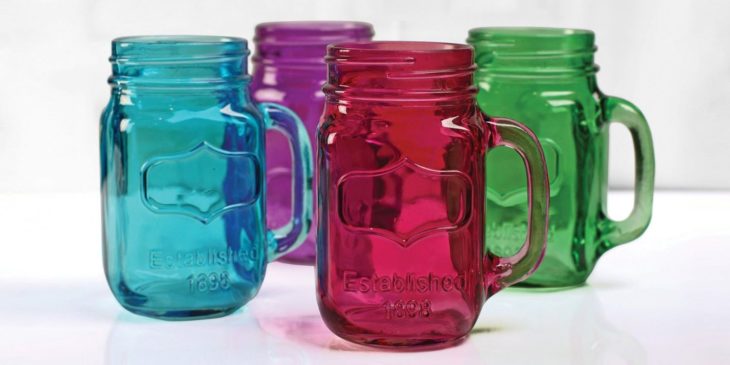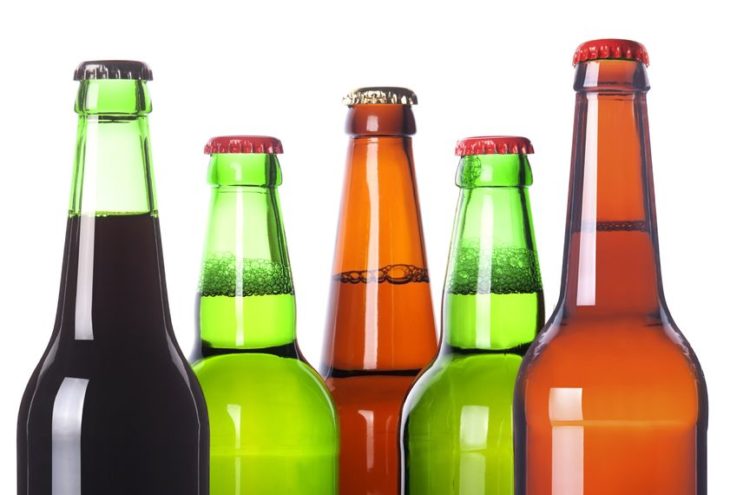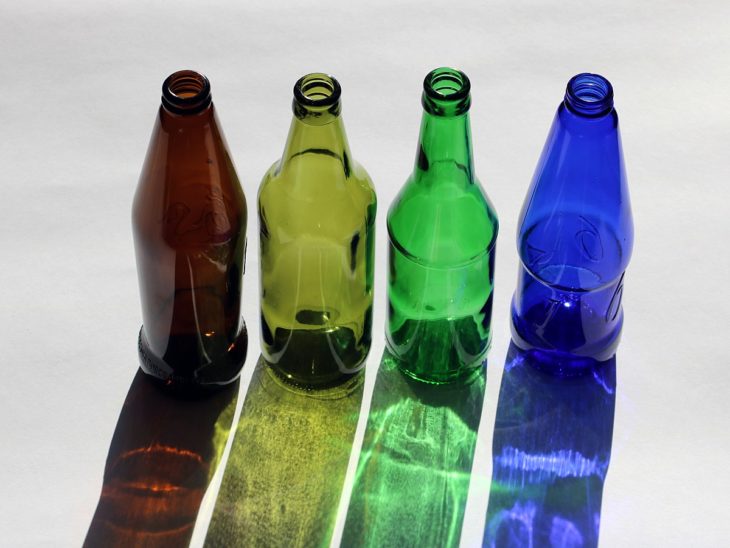Coloured glass can be incredibly beautiful and is often used for aesthetic purposes, like the glass seen in old stained-glass windows, antiques, and home décor, but some glass colours and colourants provide additional, cost-saving benefits like UV protection that are invaluable to industries that require glass containers and plate glass.
The colourants used to achieve the most desirable colours often improve the end product’s stability as well, which goes a long way to save money during the manufacturing, storage, and shipping processes. These benefits are in addition to the existing advantages of using glass for these applications.
Contents
Applications and Benefits of Glass

Source: WesternWhiskies
Glass is already considered a superior product in many applications. Its resistance to chemical reactions and tampering make glass the perfect container for food, beverages, and pharmaceuticals. Glass does not affect the taste of food or drinks and won’t deteriorate.
Because it is nonporous, glass is generally easy to clean and resistant to the growth of bacteria and microorganisms. The shelf life of various oils can be extended by using glass containers, and advances in glass production today have made it one of the safest and most versatile materials to use in construction and automotive applications.
Shipping is made easier and more cost-effective by the strength and structural stability of glass, which allows for stacking. It can also withstand conditions that could adversely affect other types of containers, such as high altitude and temperatures.
Another benefit of glass is that it can be repeatedly recycled without losing strength or structural integrity. This aspect is not only environmentally responsible but can be taken advantage of by manufacturers to reduce inventory loss caused by defects. Re-melting glass that contains an imperfection will often reduce the imperfection to an acceptable level or eliminate the defect completely.
Benefits of Colouration

Source: BestProducts
To colour glass, specific oxides are added to the forehearth before the glass reaches the forming machine. Iron, sulphur, and carbon or anthracite can be used to make a rich amber colour, chrome flour or iron chromite can create various shades of green, cobalt oxide makes a beautiful, deep blue glass and copper oxide makes a truly striking black glass.
While the different formulations can provide various cost-saving benefits during the manufacturing process, like iron pyrite’s ability to lower heating costs by heating naturally during colouration, the most notable benefits of coloured glass are the different degrees of protection from ultraviolet light.
Interestingly, UV protection is not just a beneficial attribute for the preservation of products contained within colored glass or today seen more in coloured glass splashbacks, but it has historical significance as well. In ancient times, colored glass was used in sacred spaces, cathedrals, and palaces primarily for its aesthetic appeal, but it inadvertently provided UV protection. This unintentional protection played a role in preserving ancient art, manuscripts, and other priceless artifacts from the harmful effects of prolonged UV exposure.
Apart from UV protection, the choice of color in glass can also influence the internal temperature of the contained environment. Darker hues tend to absorb more heat, while lighter shades reflect it. For example, amber glass containers might be slightly warmer than their clear counterparts when exposed to the same light source. This property is especially crucial for specific applications where temperature control is essential. Furthermore, colored glass can also provide privacy, obscuring the contents of the container or space. In modern architecture, the application of tinted glass in buildings not only serves to protect inhabitants from UV rays but also offers seclusion without sacrificing natural light.
Amber or brown glass absorbs nearly 100% of ultraviolet light at wavelengths shorter than 450 nanometres. This is the best available protection from damaging UV light. Cobalt glass absorbs slightly less UV light, but still provides significant protection, allowing only blue light through. Certain shades of green offer the lightest UV protection and are perfect for applications that involve only minimal sensitivity to light. This however has changed in recent years as they have been able to develop a UV green which incorporates the benefits of brown glass with its high UV protection but still yields a beautiful green glass which is always appealing. The only difference is you have darker shades of green with UV protection and lighter shades of green with less UV protection.
Applications for Coloured Glass

Source: nysenate
Beverages like beer that are highly sensitive to light can generally be found in amber bottles that protect from virtually all UV radiation. Pharmaceutical companies and essential oil bottlers also usually prefer amber coloured glass for their containers because of its high level of protection. Amber glass is often seen in windows of facilities that house sensitive materials like antiques and artwork.
Cobalt blue is widely used for decorative purposes because and to contain less sensitive health and wellness products. Various shades of green glass are used for less sensitive oils, like olive oil, and beverages that require a small amount of protection, like wine. These items can be exposed to a small amount of UV light without ruining their flavour or efficacy.
Uncoloured (clear) glass does not absorb UV light and is best used for water, foods, and construction that doesn’t require any protection from the sun. Tints and laminates can be added to clear glass to add various levels of UV protection, but this requires additional processing and materials, as well as labour hours, and can significantly increase the occurrence of defects in the finished product.
Glass Colouration

Source: Wikipedia
To ensure precision colouration of plate glass and glass containers, it is vital to use high-quality oxides in precise formulations, milled to the specifications that fit your application. Iron pyrite, chrome flour, anthracite/carbon, and other colourants can be ordered and shipped worldwide from reputable mineral mining companies like African Pegmatite, located in mineral-rich South Africa.
Experienced dealers like this can not only provide the materials you need to create the colour you want, but can also offer assistance in choosing materials and specifications based on your production process and goals for your end product. View African Pegmatite’s glass colourant products or contact an expert at https://www.mineralmilling.com
